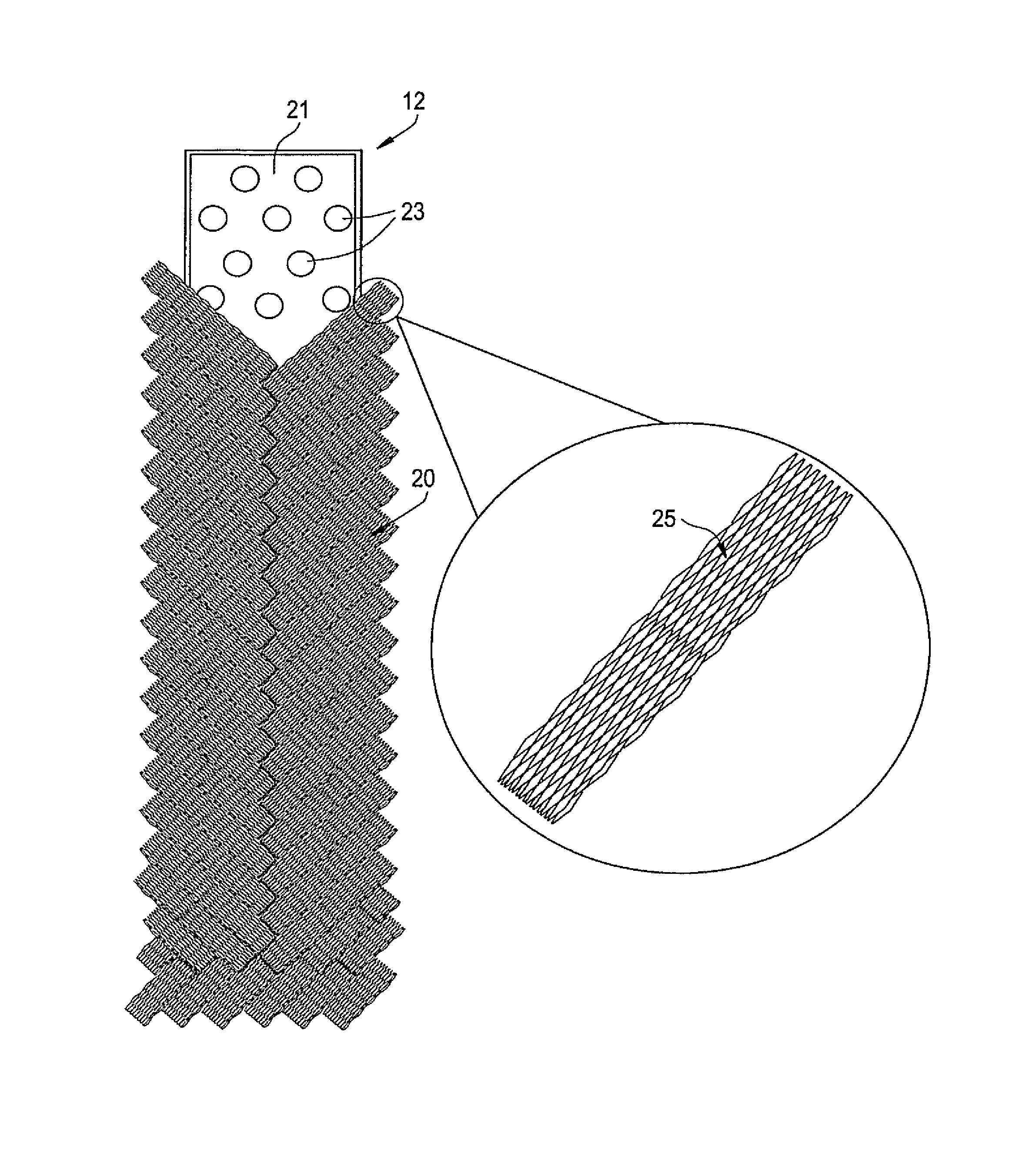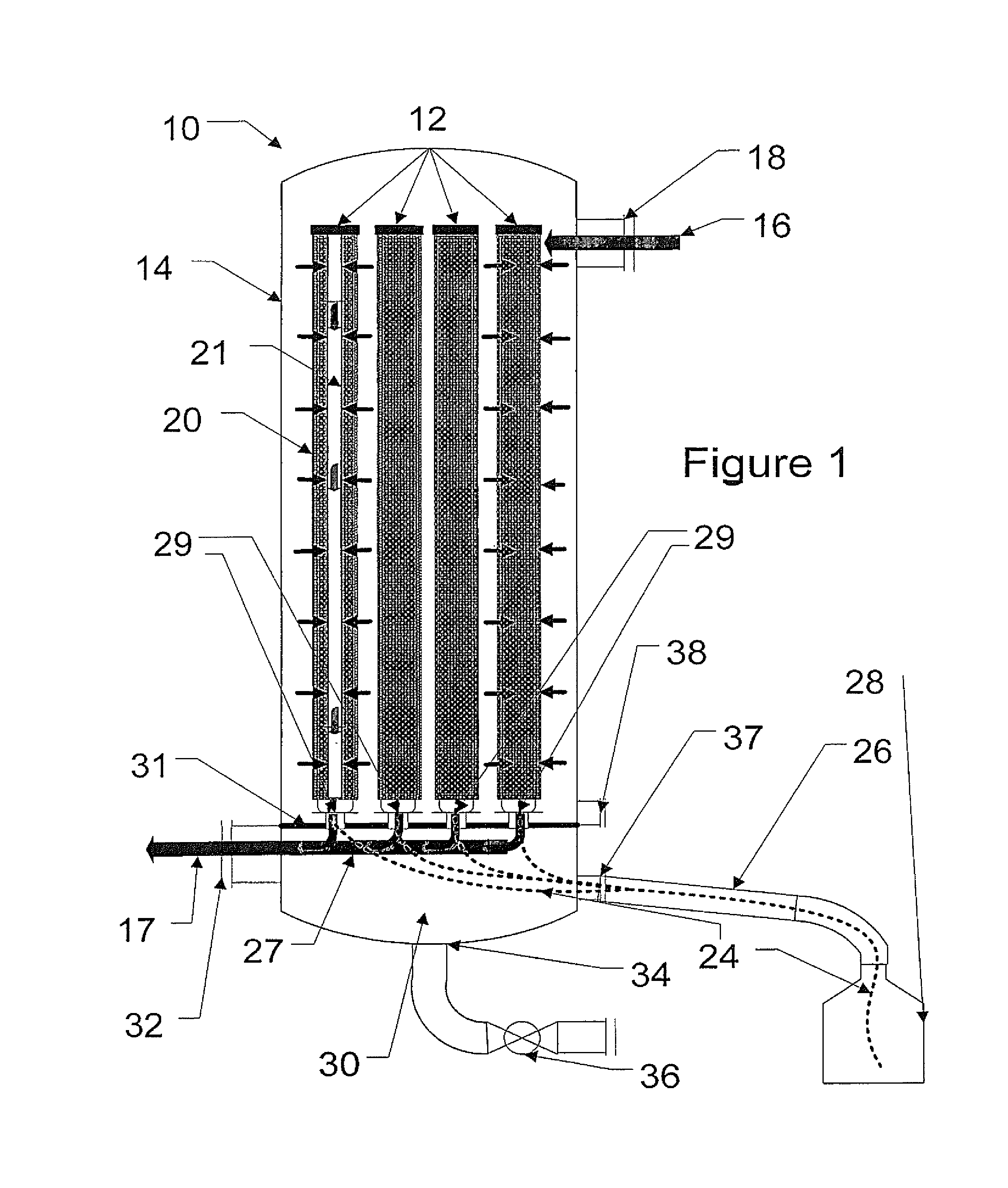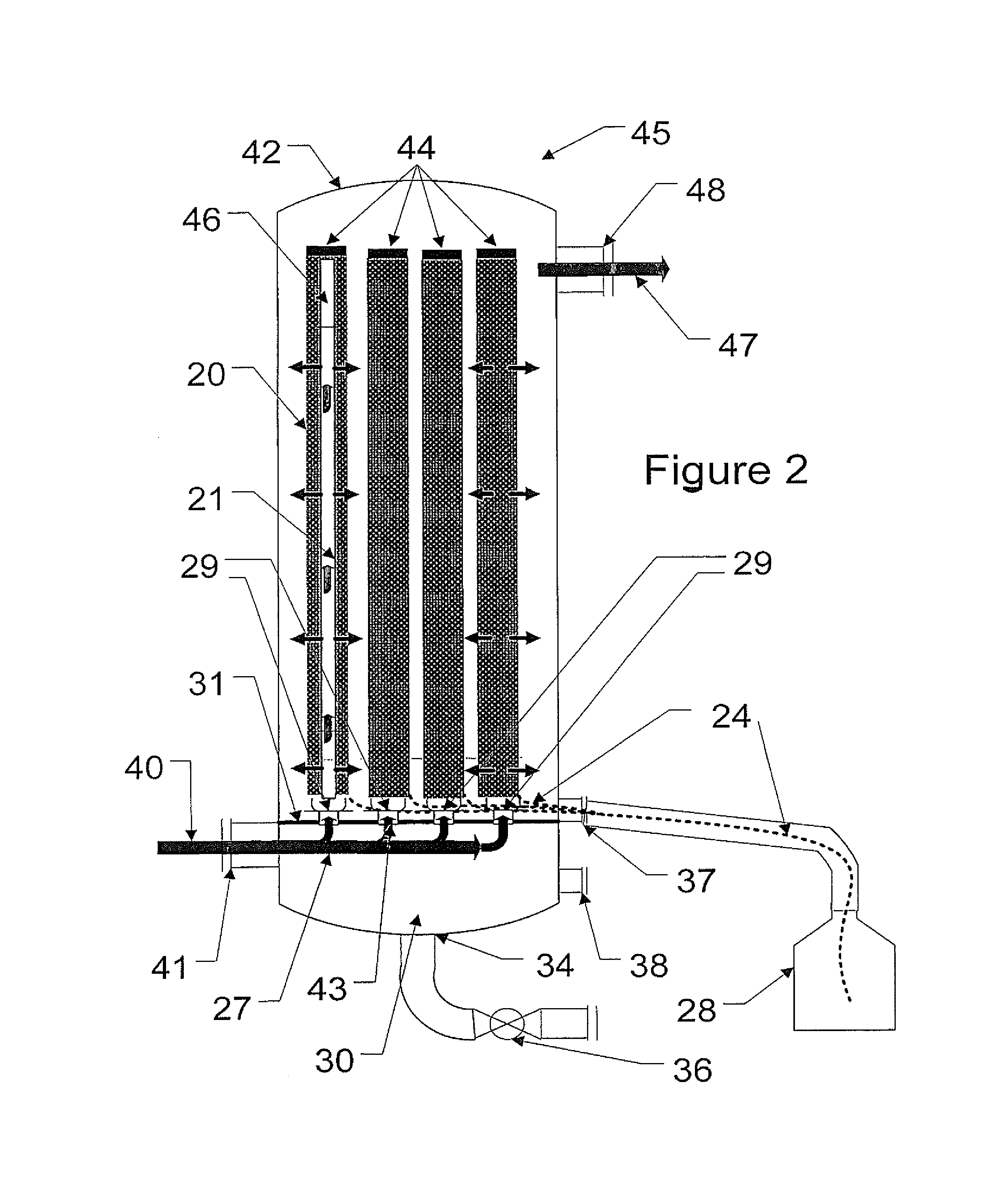Process and system for separating finely aerosolized elemental mercury from gaseous streams
- Summary
- Abstract
- Description
- Claims
- Application Information
AI Technical Summary
Benefits of technology
Problems solved by technology
Method used
Image
Examples
Embodiment Construction
[0031]As used herein, the term “precious metal” is defined according to the art-recognized technical definition provided in the Academic Press Dictionary of Science and Technology (ed. C. Morris, p. 1711, Academic Press, Inc.; San Diego, c. 1992), namely, precious metal means silver, gold, or any of the platinum group metals. A platinum group metal is defined according to the Academic Press Dictionary of Science and Technology (ed. C. Morris, p. 1670 Academic Press, Inc.; San Diego, c. 1992) as any of the six metals belonging to group VIII B of the Periodic Table, that is, ruthenium, osmium, rhodium, iridium, palladium, and platinum, which is understood by the skilled person.
[0032]This disclosure provides generally a method and a filtration system that can separate droplets of finely aerosolized elemental mercury from a gaseous stream in which the droplets are dispersed. The method and system address the limitations of the prior art by, among other things, overcoming the surface ten...
PUM
| Property | Measurement | Unit |
|---|---|---|
| diameter | aaaaa | aaaaa |
| diameter | aaaaa | aaaaa |
| differential pressure | aaaaa | aaaaa |
Abstract
Description
Claims
Application Information
 Login to View More
Login to View More - R&D
- Intellectual Property
- Life Sciences
- Materials
- Tech Scout
- Unparalleled Data Quality
- Higher Quality Content
- 60% Fewer Hallucinations
Browse by: Latest US Patents, China's latest patents, Technical Efficacy Thesaurus, Application Domain, Technology Topic, Popular Technical Reports.
© 2025 PatSnap. All rights reserved.Legal|Privacy policy|Modern Slavery Act Transparency Statement|Sitemap|About US| Contact US: help@patsnap.com



